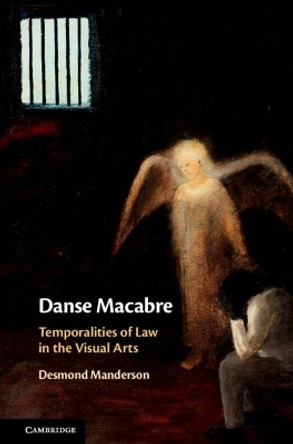Description
A revolutionary approach exploring legal themes such as justice, legitimacy, sovereignty, and power through close readings of major works of art.
About the Author
Desmond Manderson is a Fellow of the Royal Society of Canada and Professor in the Australian National University, Canberra College of Law and the ANU College of Arts and Social Sciences at the Australian National University. He is the author of several books including Songs without Music (2000), Kangaroo Courts and the Rule of Law (2012), and Law and the Visual: Representations, Technologies, and Critique (2017).
Reviews
'This book dances indeed. Moving deftly from one angle of the triangle of time, law, and art, to the other, this book shows - through a great variety of artworks, all taken up in detail - the complexities and the consequences of these pluralities. There is no other book which does this in such depth in all three fields. We know that law does not equal justice, that the line between law and genocide is flint-thin, and that the time of the clock is very different from the temporalities we experience. That law's dance has death at its heart is a fact of life, but that so many artists in so many different cultural places and moments have been able to make this sensuously perceptible and deploy it as a cry for a justice that is, precisely, not blind: this is what Manderson demonstrates in this utterly enjoyable book.' Mieke Bal, Cultural theorist, critic, video artist and curator
'Quondam musician and part-time playwright, full-time jurist, artisan and aesthete, Manderson extracts, expounds and exemplifies the reinvention and relocation of law in its artistic context. Danse Macabre bravely overcomes the jurist's twin fears: of the image, and of theory. This book brilliantly interprets the art that surrounds law as a compelling narrative of justice and of failing legality.' Peter Goodrich, Director of Law and Humanities, Benjamin N. Cardozo School of Law, Yeshiva University, New York
'Drawing on recent psychoanalytical, hermeneutic and phenomenological approaches to the histories of art, Manderson weaves a history of the law from 1500 to the present day - a history that neither progresses nor unravels but keeps returning to the archetypal, indeed holy, trinity of law, death and time, which he argues inhabits and manifests in art. Through a close and extended reading of his chosen artworks, and through the innovative methodologies he uses to unpack them, Manderson's chapters build like symphonic movements into a veritable masterclass in the historiography of art. Art, Manderson argues, cannot escape the deathly grip of the law and its temporality - a grip, he argues, that will always entice and elude us.' Ian McLean, Hugh Ramsay Chair of Australian Art History, University of Melbourne
Book Information
ISBN 9781316611265
Author Desmond Manderson
Format Paperback
Page Count 307
Imprint Cambridge University Press
Publisher Cambridge University Press
Weight(grams) 415g
Dimensions(mm) 229mm * 152mm * 16mm





